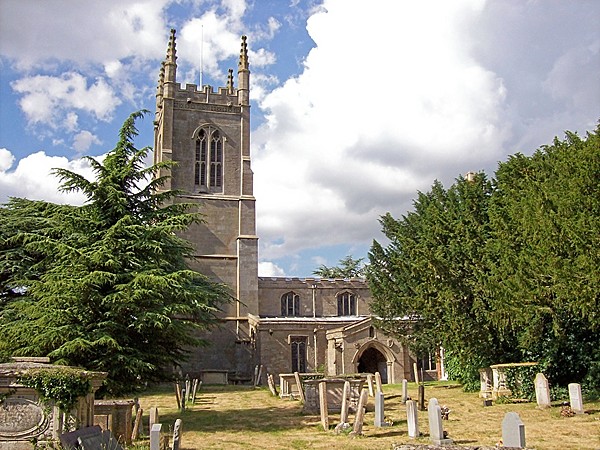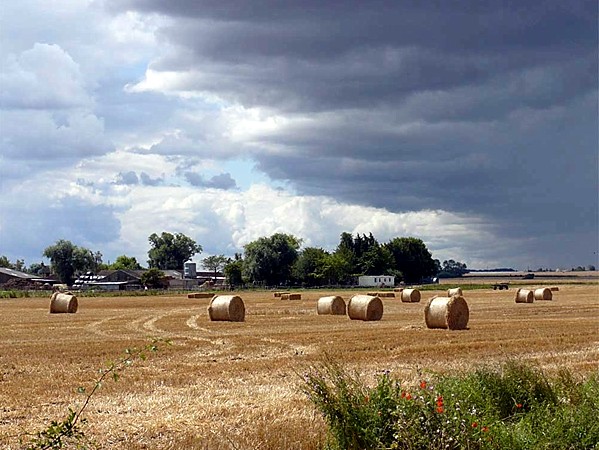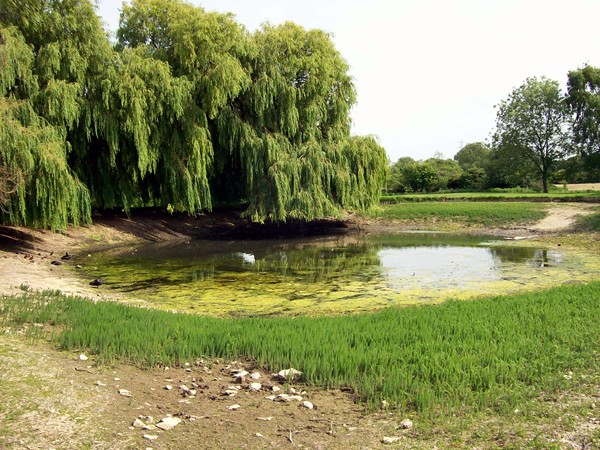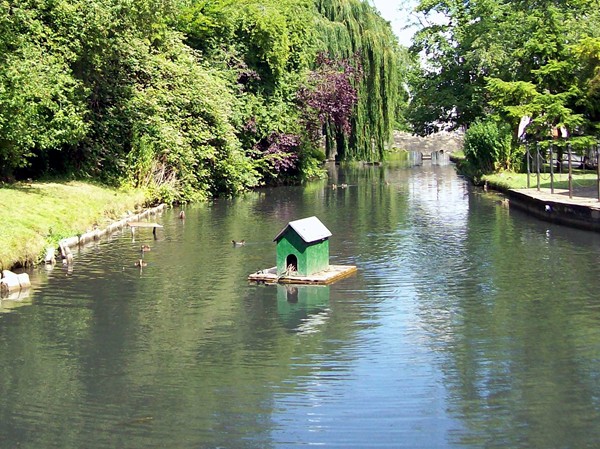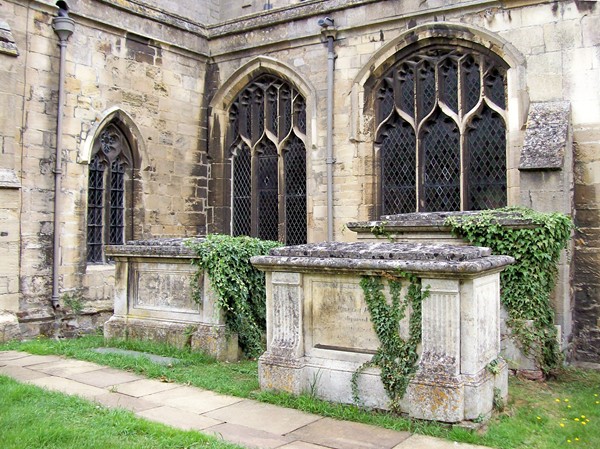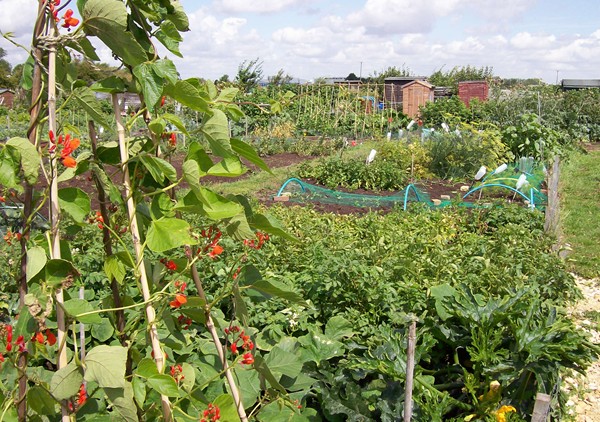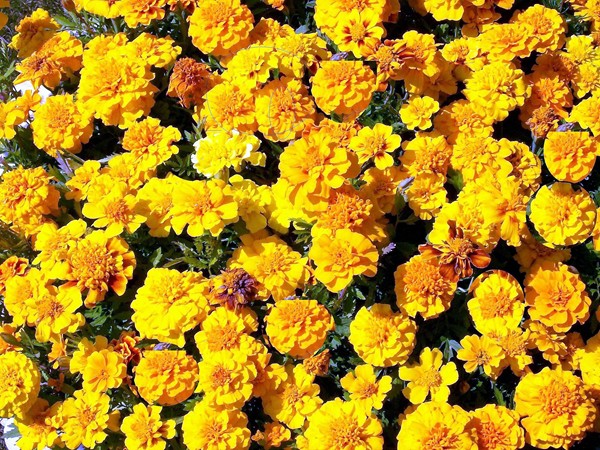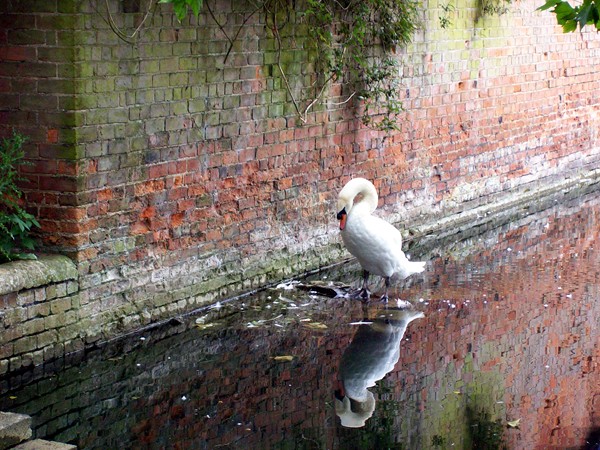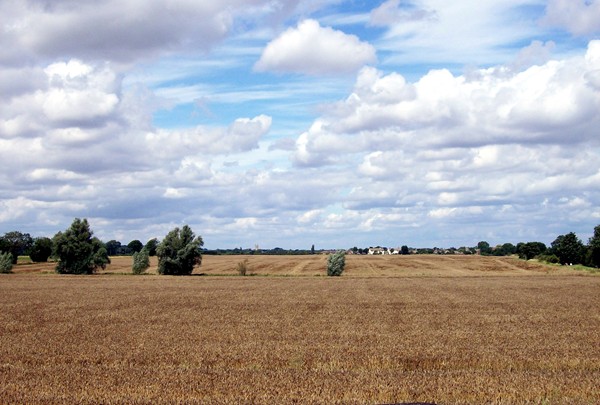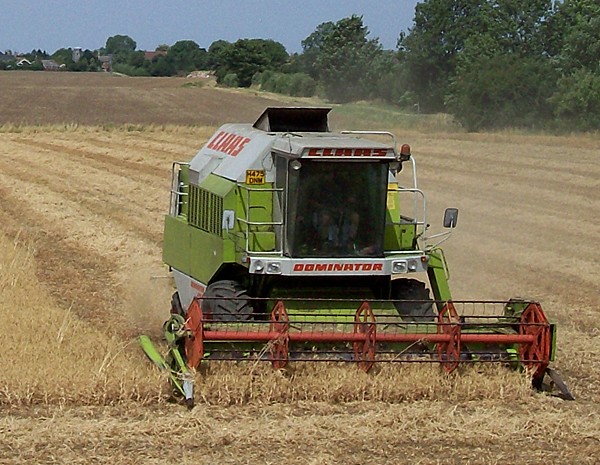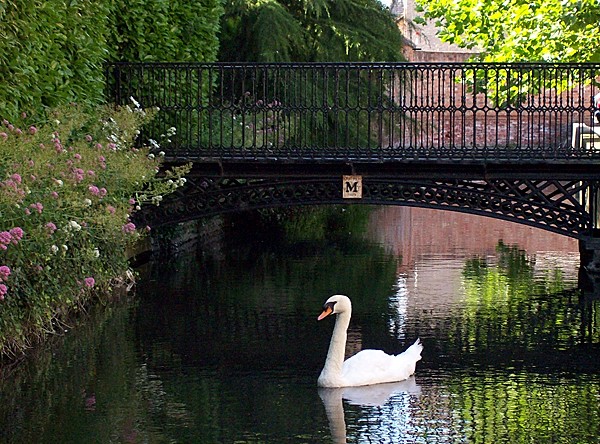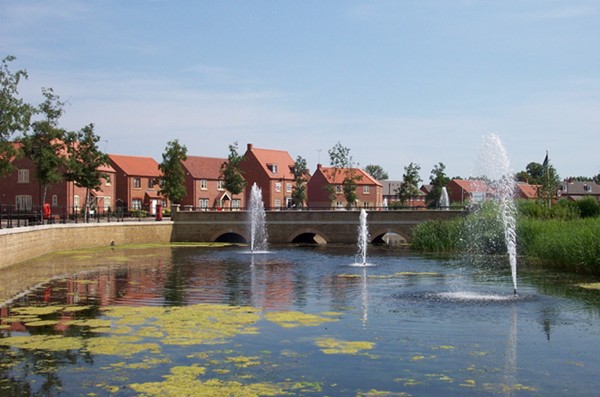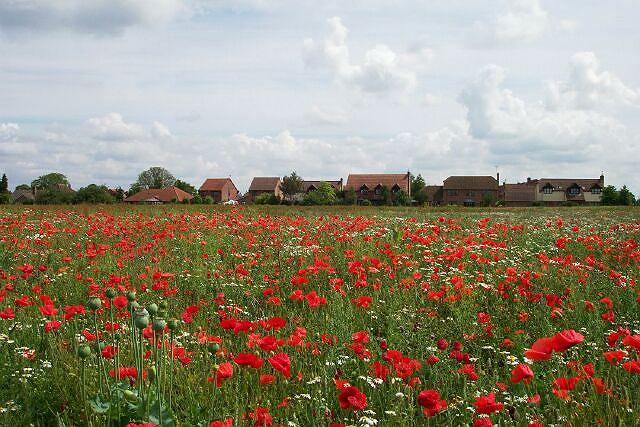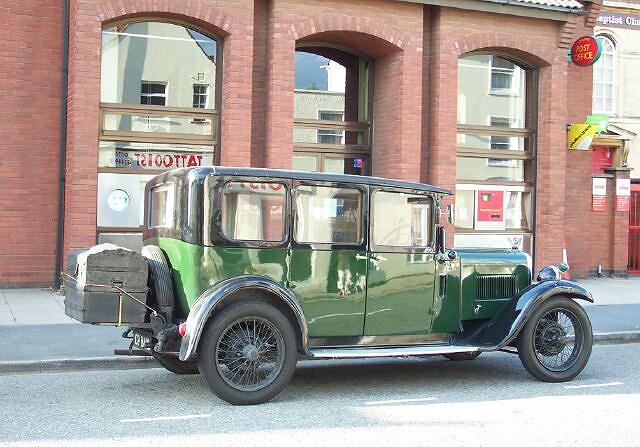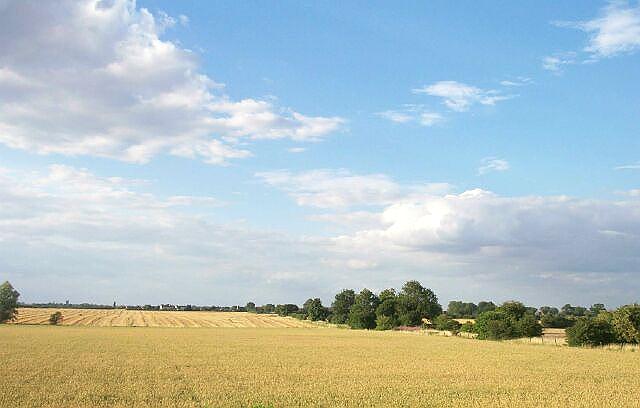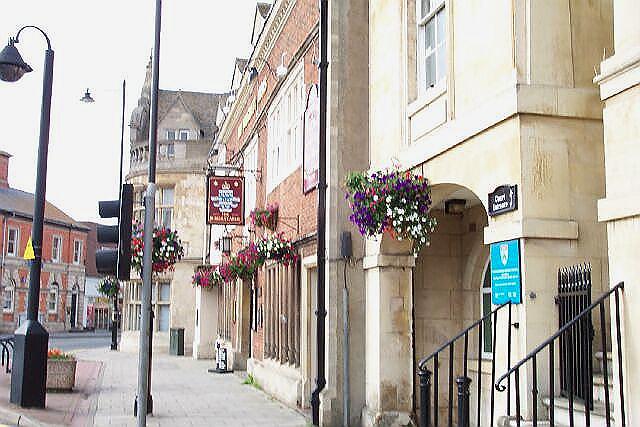|
July
Tuesday 8th July 2014: A line of poplars in the middle of a housing estate off Beech Avenue are a reminder of a social experiment in this country during the last century when the trees marked the entrance road to the Hereward Labour Camp, a collection of wooden huts that housed hundreds of the nation’s unemployed who were sent here to keep them occupied with manual labour rather than stay at home and drift slowly away from the work ethic. This small community existed for eight years until 1939 when the problem of unemployment was solved by the outbreak of the Second World War although the camp continued for a further twelve years as an approved school for young offenders.
Thursday 25th July 2013: This is a handsome building, wrote Arthur Mee in his guide to Lincolnshire published in 1949, with a pinnacled tower rising high above the clerestoried nave, and notable because every century down from Saxon times has contributed to its architecture or enrichment. And so it remains, a scene of peace and tranquillity on this pleasant summer's afternoon, containing several artefacts that remind us of its historic past, the fragment of a Saxon cross in the nave, pews with traceried ends from mediaeval times and from the 12th century, a massive arcaded font with shafts of Purbeck marble that can be found tucked away in a corner against the west wall.
Sunday 29th July 2012: We have been into a period of warm weather with sunny spells and heavy showers that occur suddenly and without warning and are likely to drench the unwary. This ever changing pattern creates dramatic variations in the cloud formations overhead such as here at Thurlby Fen, near Bourne, where the low lying landscape gives an uninterrupted view of this phenomenon while the fields below are covered with stubble and dotted with big bales, a sign that the corn harvest is already well advanced.
Thursday 14th July 2011: The water in St Peter's Pool is at the lowest level known for many years, leaving the black swans, mallard and other water birds high and dry, a situation created by a combination of drought conditions during recent months and continued extraction for public use, a sorry situation for one of England's most ancient artesian wells yet one we are powerless to change. It is also a reflection on the way our natural resources are being used for although the pool provides an unending supply from seven underground springs, we continue to exploit it even when the signs are that we should not.
Wednesday 6th July 2011: A floating duck house has been a feature of the Bourne Eau in South Street for over a decade, attracting mallard for nesting and a perch for other feathered visitors including kingfishers but the old structure deteriorated through age and was dismantled last year by members of the Civic Society who run the Heritage Centre at nearby Baldock's Mill. It has now been replaced, the work being undertaken by Jim Jones and Doug Fownes who used a quantity of spare wood to complete the project and the home from home is now back in use and has already attracted a pair of moorhens who are busy raising their young in the new accommodation.
Thursday 29th July 2010: Thomas Hardy wrote in his famous elegy that in the churchyard "the rude forefathers of the hamlet sleep" but perhaps he should have added that they are also completely forgotten despite having been leading citizens in the community during their lifetime. Here on the south side of the Abbey Church are the grand sarcophagus tombstones erected in memory of members of the town's most important families who died two centuries ago, now neglected and overgrown with ivy and remembered by no one yet still serving as a reminder of the feeble grasp we all have on life.
Wednesday 18th July 2010: Continual spells of sunshine have been beneficial for the corn crops which are now turning a golden brown and soon the countryside will be filled with the hum of the combines as the harvest is gathered in for another year. The prolonged spell of dry weather which gave an unsteady start to the growing season earlier in the year has given many farmers a pessimistic outlook for their yields and although appearances may be deceptive, these fields of wheat between the north of Bourne and Dyke village which can be seen in the distance certainly look their best for many years.
Thursday 23rd July 2009: The rich black soil for which this part of the country is famous is at its most productive now especially on the allotments in Bourne South Fen administered by the town council where part time gardeners are busy growing vegetables for the table, a multitude of varieties from potatoes and onions to carrots, leeks, runner beans and peas while some even leave a little space for a few flowers. Even the Queen and the Prime Minister have begun growing their own while these small plots rented out at low rents have been popular for more than two centuries and demand for tenancies is now as high as ever with a waiting list of up to three years whenever one of the ninety or more becomes available.
Tuesday 29th July 2008: Many of the flowers and shrubs we grow every year are not indigenous to this country but were brought here in times past by intrepid plant collectors who scoured foreign parts for species to adorn our gardens and delight the eye. The hunt continues although in a more commercial fashion and unusual plants are bred today specifically for the export market which is how this Vancouver Centennial geranium reached my patio this summer, a colourful alternative to the traditional variety because of its variegated leaves. I am indebted for this particular one to Clingo's Nurseries in South Fen Road, Bourne, who have established a high reputation for bedding and pot plants in spring and autumn of a very high quality and at prices well below those charged by other garden centres in the locality.
Monday 28th July 2008: The price of seeds from the garden centres continues to increase at an alarming rate year by year putting them out of the reach of gardeners of limited means but a far cheaper and more efficient method of obtaining them is to collect them from the plants you have been growing the previous year. These French marigolds are now in their fourth or even fifth season and they become hardier and more prolific as time passes, originally grown by my brother and the seeds collected each year by the bagful to produce several tubs covered in colourful crops such as this every summer in my garden as well as his.
Wednesday 2nd July 2008: This forlorn creature is Jack, a lone mute swan that lives on the Bourne Eau in Church Walk, and you might say that he is up for sale except that all swans are by tradition owned by the monarch and cannot therefore be sold. His mate has died long ago and he has a damaged wing and cannot fly and so has become a permanent resident on the river behind Bourne Eau House, sleeping under a tree in the garden and being fed during the winter months by the owners who have been looking after him for the past nine years. The property is now on the market for £875,000 and it is hoped that the buyer will also take on the responsibility of keeping an eye on Jack.
Sunday 22nd July 2007: We have had continually wet weather for several weeks and the countryside is soaking wet and although the corn crops have been looking rather bedraggled, a spell of sunshine seems to revive them and provided the rain stays away, the combines will soon be out bringing in the harvest for another year. This is the view of the fen from my study window, looking towards Dyke village, with two fields covering more than 100 acres devoted to wheat and although patches have been flattened by spells of torrential rain, the overall appearance of the crops is good and they are likely to produce substantial yields provided the inclement weather does not return.
Saturday 29th July 2006: The pea crop in the fifty-acre field outside my study window was being harvested today and from my desk I had a grandstand view of the operations for several hours, the mighty combine coming very close up each time it reached the southern boundary. Peas are normally cut when they are young, green and succulent and transported immediately to the processing factories where they are frozen for sale in the supermarkets but these have been left to dry out in the long hot summer and will probably be used for animal feed. In past weeks, as the field turned a golden brown, many thought that the crop was wheat and even the harvester is the same machine used for cutting corn but the basic process of reaping and threshing applies to both although the farmer disposed of this pea crop at a much faster rate.
Tuesday 11th July 2006: After leaving the Wellhead Gardens, the Bourne Eau crosses South Street underground and surfaces here in the pleasant and peaceful pedestrian way known as Church Walk, one of the most secluded parts of the town and home to generations of mute swans. There was a pair in recent years but now a solitary bird patrols its domain with the cast iron bridge leading to Bourne Eau House in the background. This charming Victorian structure was built by the Mawby family when they were in residence during the early years of the 19th century and the family monogram survives from 1832. This is probably the most photographed part of Bourne and it is difficult to realise that Church Walk was once the main Lincoln to London road used by stagecoaches and carriers carts until South Street was built to take the traffic because of fears that the vibrations might damage the fabric of the Abbey Church.
Thursday 6th July 2006: Competition is fierce but Bourne is undaunted and this week the judges arrived to take a look at what the town looks like in summer before making their decision in the East Midlands in Bloom competition. There has been a flurry of activity in recent weeks in a bid to put on a colourful floral display and on Tuesday, a band of volunteers, including many schoolchildren, turned out for a spell of litter picking to ensure that the streets were clean when they came under scrutiny the following day. Here in the town centre, hanging baskets and tubs provided a bright and attractive setting for our old buildings, such as the Burghley Arms, and after so much hard work, those involved are now waiting to hear whether their efforts will be rewarded when the results are announced later in the year.
Saturday 1st July 2006: The lakes built at the entrance to the Elsea Park housing development to the south of Bourne have now became well established with fountains spraying the surface. The houses nearby are in streets appropriately called Quayside East and West and the whole area is surrounded by a mass of vegetation at this time of the year. The water features are a delight and today I found the main lake teeming with freshwater fish, mainly schools of rudd, deep bodied and easily distinguished by their blood-red fins, swimming in the shallows and frequently breaking the surface to take unsuspecting insects. I was so engrossed in watching them, remembering my boyhood years when similarly engaged, that I forget the time and almost an hour slipped by unnoticed. Sixty years ago you could only see these fish in a secluded river backwater or isolated lake but here they are swimming about in a perfect environment within easy reach of a modern housing estate.
Friday 1st July 2005: Poppies are among the most resilient of our wild flowers, retreating stubbornly from the onslaught of agro-chemicals that annually try to keep them at bay. Even though crops of cereals are treated regularly they can still be seen blooming at the field's edge where they have escaped the sprays and if a field is left either fallow or unused through opt-out, they will thrive anew and provide a galaxy of colour such as here on the outskirts of Baston, four miles south of Bourne, where urban development begins to encroach upon the countryside. Poppy seeds will lie dormant for many years, waiting for a chance of renewal, which is why they have become a feature of disturbed land such as road works and new housing estates, or more familiarly, in the fields of Flanders during the Great War of 1914-18 where trenches were dug as fortifications and so the flowers that sprang up became an emblem for those who died in that terrible conflict.
Wednesday 28th July 2004: The weather was warm and sunny and so in the late afternoon we drove out to Irnham, six miles north west of Bourne, to see the village church that has recently been restored. This was our first visit since last year and there has been some house building since but all of the developments are sensitively designed to blend in with this beautiful village. We came in through Kirkby Underwood and Hawthorpe and entered Irnham from the west, a narrow country road I have used often, but today the sun broke through from behind the clouds just as we were passing the first cottages, providing an irresistible view that I had to stop and photograph. The village church also looked splendid. See Irnham.
Sunday 27th July 2003: Sunday evening is the perfect time to walk around this small market town because there are few people around and very little traffic and every time we discover something new. Today, at around 6.30 pm, we found this delightful vintage car in beautiful condition parked outside the Post Office in West Street. There was no one in it but, anticipating the questions that might be raised by the curious, the owner had left a notice in the back window which said: "My name is Herbie. I am a 1929 Austin Burnham 16.6 and have been in the same family since new. I am used every day and have covered over one million miles on the same engine and running gear and have raised thousands of pounds for children in need. I was used as a taxi during the war and have even stood in as an ambulance. I am 73 years old this year and no, I am not for sale!"
Sunday 20th July 2003: The passing of time is marked by the changing seasons, especially in rural areas where one look at the countryside enables you determine which you are in and a close inspection of plants and trees will also enable you identify the actual month. This is the view from my study window at the beginning of harvest time and the far field towards Dyke village has already been cut while the straw has been thrown out into neat rows to await the baler. This crop was sown last autumn and is therefore the first to be harvested but the wheat in the foreground is a spring sowing and will not be ready for the combine until much later, probably towards the end of August. Ripening corn has a deep rich colour all of its own and seeing it in the sunlight of a summer evening gives us the reason why this time of the year is known as the golden season.
Tuesday 8th July 2003: The town centre looked particularly attractive when we drove in late this afternoon with colourful hanging baskets outside the Town Hall and the Burghley Arms, one of our historic hostelries dating back to Elizabethan times. This facade, which includes the Town Hall on the right, built in 1821, and Lloyds Bank plc on the left, which dates from the late 19th century, is perhaps the best that Bourne has to offer and probably the most photographed and it is therefore a pity that weeds are allowed to grow along the pavement's edge when they could easily be removed with a moment's effort. I took this shot after waiting for some time to find a gap in the traffic and so keep the picture free of lorries and vans and even though it was almost 6pm, the volume of vehicles passing through on what is in effect one of Britain's trunk roads, the A15, was quite astounding and serves as a constant reminder of the urgent need Bourne has for a north-south bypass.
Wednesday 31st July 2002: Bourne has an abundant supply of water from underground sources and yet surface levels along the Bourne Eau always drop during the summer months, particularly when we have dry spells such as that we have experienced during June and July. The torrential rain during this week's thunderstorms has failed to remedy the situation and both the river and St Peter's Pool particularly, are between two and three feet below the normal level with the result that algae blooms in abundance and discarded rubbish looks all the more unsightly. The seven springs reputed to supply the pool produce around five million gallons of water a day but the bulk of this is pumped out by Anglian Water to supply homes and businesses in a larger catchment area as far away as Peterborough and so Bourne is denied its own water to ensure that the river levels are maintained. The result is that our very own beauty spot around the Wellhead Gardens is less attractive than it should be at this time of the year but then that is the price we pay for not running our own water undertaking as we did in years past. Saturday 27th July 2002: A rare example of a weeping ash tree that has dominated the churchyard at Rippingale for more than a century has been cut down. Tree surgeons arrived last Saturday and within hours, this familiar landmark standing next to the war memorial had been reduced to a pile of logs. The weeping ash (Fraxinus excelsior'Pendula') is not a common sight in Britain but it can be found in some gardens, parks and churchyards and is identified by its long vigorous shoots that grow straight down to the ground from a head of twisting branches, once seen, never forgotten. This example in the shadow of St Andrew's Church graces many a family album because it has been a favourite spot for newly weds to be photographed after tying the knot. Fears for the future of the tree surfaced earlier this year when it failed to produce any leaves and as the weeks went by it became apparent that it was dying and an inspection showed that the trunk was partly hollow and might be toppled by strong winds and cause damage. When it was eventually cut down, a section of the trunk revealed that it had rotted inside, perhaps from a previous drought because the churchyard stands elevated from the main street and would become very dry in rainless periods. Nevertheless, the weeping ash has been a popular village feature that will be sadly missed although the parish council are hoping to replace it with a tree of the same species before the year is out.
Thursday 18th July 2002: Many people who walk in Bourne Wood do not realise that there are two small lakes deep within the forest. It is a long walk to reach them from the main entrance in Beech Avenue but the effort is well worthwhile. These 400 acres of woodland were once part of the primaeval Brunswald Forest covering this part of England and this far point is the most beautiful, quiet and secluded spot, rather like the fairy glades from the stories of childhood. It is a magical place, full of fallow and muntjac deer that can often be seen coming down to the water to drink at dusk. You may also catch sight of foxes and badgers, rabbits and voles, as well as a wide variety of flowers and other plants, butterflies and birds, and on one of our excursions this week, we even spotted an early purple orchid (Orchis mascula), a rare sight, especially at this time of the year. As an added attraction, one of the lakes is also teeming with goldfish and on a warm summer's day, it is possible to see hundreds of them basking near the surface. On this wonderful morning, while the rest of Bourne was going about its business, to school, to work, shopping and whatever, we had the woods to ourselves and never saw a soul during our outing. Go there and see for yourselves and despite the distance, you will return refreshed and your spirits uplifted by the experience.
Wednesday 10th July 2002: The spell of sunshine and showers continues over Bourne although the weather remains balmy with a warm wind known in other countries as the mistral or the Föhn. Today, there was actually a sprinkling of rain while the sun was still shining and then the storm clouds gathered again and created this angry and dramatic skyscape over the ancient Town Hall, its mellow stone lit by the late afternoon sun to remind us that this building has withstood changing weather patterns since it was erected in 1821. It cost under £2,500 to build, which is £130,000 by today's values, and has been in continual use ever since, mainly as a magistrates court and council offices but also for many of the town's major social occasions in past times, particularly an annual ball that was held during the 19th century to raise money for the erection and maintenance of the National School in North Street. The building also once looked a little grander because it was originally surmounted by a clock tower that was destroyed by fire in 1933.
Wednesday 3rd July 2002: Summer is upon us but the weather continues with its unseasonable round of rain and cold although interspersed with welcome bursts of sunshine to remind us that we really are into July. The farmers have benefited greatly from these changeable weather patterns and frequent rainy periods have given a healthy ripening glow to the crops growing in the fields of the South Lincolnshire corn belt. I took this photograph of a storm blowing up over the fens from my study window this week and the wheat growing across this hundred or more acres between the northern edge of Bourne and Dyke village is already turning yellow. The deep furrows that can be seen down the fields are known as tramlines and act as markers for the farm tractor that give the crops a regular dousing of chemicals to keep the pests at bay and on those days, I must keep my windows closed or suffer the consequences. Farming is now an industry and every weapon is used to achieve a bumper crop, as it will be this year, and it will not be long before we hear the sound of the combines bringing in the harvest and another growing season will be over.
Tuesday 17th July 2001: These massive machines are bringing in the harvest at Dyke, near Bourne, although it is not wheat they are cutting but peas. The 300 h p viners have been specially made to cut and collect pea crops and to separate the pods which are then transported to the food processing plant while the vines are jettisoned behind as haulm, to be either ploughed back into the soil as fertiliser or collected for animal feed. Peas are big business in this part of South Lincolnshire and the Christian Salvesen factory in Bourne will be working round the clock for more than four weeks to process this year's yield which will be frozen for onward transmission to the packing plants and then on to the shelves of the big supermarkets, as fresh as the day they were picked. See also The Pea Harvest
28th July 2001: The countryside around Bourne is slowly turning a golden yellow as harvest time approaches because the county of Lincolnshire is the biggest producer of cereals in Britain with almost 500,000 acres devoted to wheat and producing 11.5 per cent of the national total. Soon the fields will hum to the sound of the combines as they bring in the harvest and farmers pray for fine weather until all is safely gathered in. At Rippingale, five miles north of Bourne, the corn crops cover the land up to the very edge of the village and here to the south is a ripening field of wheat with the pinnacled and embattled 15th century tower of the parish church of St Andrew's on the skyline, surrounded by the red-tiled roofs of the homes, both old and new, of those who live here.
7th July 2000: Acres of corn can be found in the countryside around Bourne at this time of the year in various shades from green to yellow as the wheat and barley crops begin to ripen in readiness for the harvest. But there are some fields that were not sown this year as part of the European Union's Common Agricultural Policy of reducing corn yields, a system known as set aside in which a proportion of farmland is left idle, although farmers are fully compensated. This means that the land escapes the usual applications of herbicides and wildlife is therefore given a chance to assert itself. Seeds that have been lying dormant in the soil burst into life unhampered, as has happened here on land alongside the country road between Manthorpe and Wilsthorpe, where poppies and oilseed provide an unusually colourful landscape and a reminder of what our countryside might look like if agro-chemicals were never used again.
15th July 2000: Another path, another wood, this time at Callans Lane Wood to the west of Kirkby Underwood, a mainly deciduous forest with many oak trees and masses of bluebells in spring. There are a number of forest walks here and the route of an old Roman road runs through it. The woodland also contains the remains of a military camp from the Second World War and although the huts have gone, the brick and concrete bases remain although now overgrown with mosses and other plants. We were walking in this wood one evening when we looked back down the track and saw a large black, loping animal crossing from one section of the woods to the other. It was too big to be a cat and the wrong colour or gait for a muntjac and so we were unable to identify it and although we do not subscribe to the theories of black panthers loose in our countryside, the sight of this creature did start us thinking and its appearance is as yet unexplained.
20th July 1999: Electricity pylons have become a familiar sight in the fields of South Lincolnshire, supporting overhead transmission lines through open country to provide power for isolated villages. These towers of lattice steel, supported on concrete foundations and protected by galvanising, are being replaced in many areas by underground installations but they persist in the more remote areas such as here just off the B1176 on the back road to Aunby. For many years, pylons have been condemned as eyesores, defacing the rural landscape, but they do have a graceful beauty snaking their way over hill and dale and some now say that they should be retained as reminders of the progress man has made in bringing modern conveniences to country communities during the 20th century.
Go to: Main Index Villages Index |

